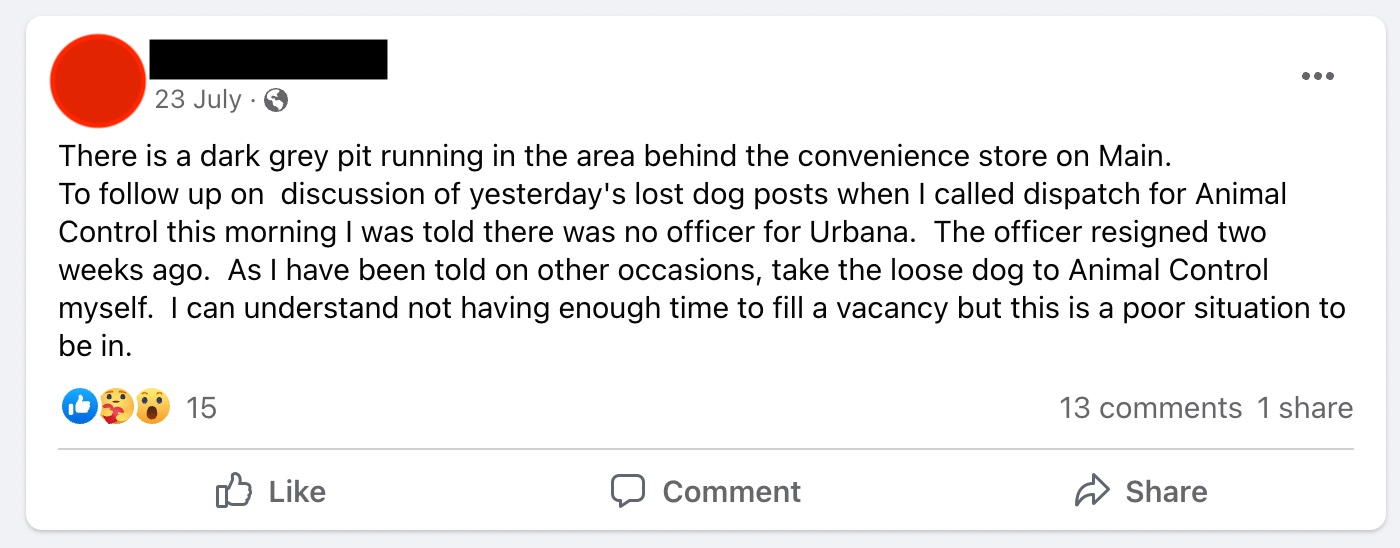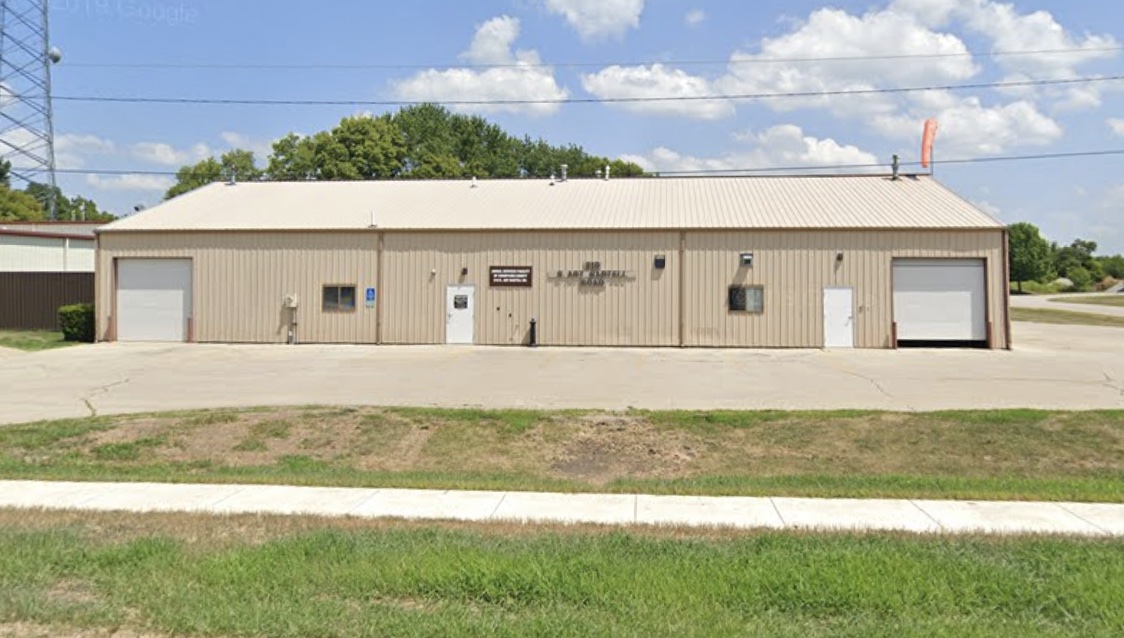Ten months ago, Champaign County Animal Control made headlines in a heartbreaking case in which they mistakenly euthanized a local woman’s dog on Christmas Eve. To say they faced criticism — and rightly so — is an understatement. Animal Control staff reportedly received repeated threats and hate mail following the incident, and at a County of the Board Whole Committee meeting a few weeks later, Champaign County Board Chairman Kyle Patterson said, “You know, I’ve had more outreach over this issue than I have over probably any issue since I’ve been on the board.”
In the wake of the event, then director of Animal Control, Stephanie Joos, implemented several changes designed to prevent such an incident from ever happening again. But in July 2021, without much fanfare, she resigned. There was no media coverage of the resignation or any information on the Animal Control webpage to indicate that this had happened. Many people found out through the rumor mill, social media, or when they encountered problems trying to call Animal Control to get services such as assistance with stray animals.

Screenshot from the Historic East Urbana Neighborhood Association (HUENA) Facebook group.
So who’s in charge of Champaign County Animal Control now? The Animal Control web page offers no information and there have been no reports filed to the County Board since May 2021.
We reached out to County Executive, Darlene Kloeppel, to find out about presumed vacancies in the department and what the current situation was with Animal Control. This was her response:
The Animal Control Department has not been without wardens at any time. Job descriptions for all funded positions for the department are listed on the webpage. Open positions are posted as staff leave on the county’s employment page and through our recruiting venues, not on the department pages. Currently we have one vacancy for a warden and one vacancy for a parttime or fulltime kennel worker. Animal Control services continue to operate uninterrupted. The Director resigned this summer, and we have done our recruitment process to replace her since that time. I’m pleased to say that we were successful and have filled that position. Since the Director left, monthly reports have not been posted. Thanks for calling this to my attention, and we will catch up soon on this task.
Our request for contact information for the current director went unanswered for more than a week. When Kloeppel finally responded she informed us that the new director would not be starting until January 1st and we would need to wait until then to contact her. Perhaps that’s why nobody responded to the message we sent to the official Animal Control email address.
Given the close affinities between Animal Control and local animal rescue organizations, we also reached out to the Champaign County Humance Society to ask if they had been affected by the resignation of the director and the current status of Animal Control. CCHS director Mary Tiefenbrunn responded saying:
Our working relationship with Champaign County Animal Control has not changed. We are still receiving unclaimed adoptable dogs and cats from their facility on a regular basis and without any change in the average number of animals being transferred, so there has been little-to-no impact on our organization.
At this point, the official word seems to be that it’s business as usual and the website needs a little updating. But after such a huge public controversy, the lack of information and transparency, and the lack of responsiveness from Animal Control itself, are troubling.
Animal Control offices provide important public services for their communities. In C-U, they are the first stop for collecting stray animals and keeping them off the streets; they process rabies vaccination registrations for local dogs and cats; they investigate incidences where humans are bitten by dogs, cats, or other animals; they investigate claims of livestock being injured or killed by dogs in the County; and they provide educational services regarding animal control and rabies.
These might not be glamorous tasks, but they are important. Though we are unable to verify the source for their data, a figure that has been circulating on various online resources, is that in the United States approximately 1.2 million dogs are killed on the roads each year, and approximately 5.4 million cats. Having a safe, reliable service to get stray animals off the roads helps protect animals from becoming roadkill, and keeps other people and domestic pets safe from being attacked by strays.
Moving forward, we hope to see increased transparency and communication from our County Animal Control. We hope they will continue to follow through on their commitment to ensure that tragedies like the one last year won’t happen again, and that they will seek opportunities to be proactive partners in the community in ensuring the safety of companion animals and the people who interact with them. Animal Control needs to be visible, available, and center empathy and humane practices in their services. It needs to be more than an updated website.
The Editorial Board is Jessica Hammie, Julie McClure, Patrick Singer, and Mara Thacker.








